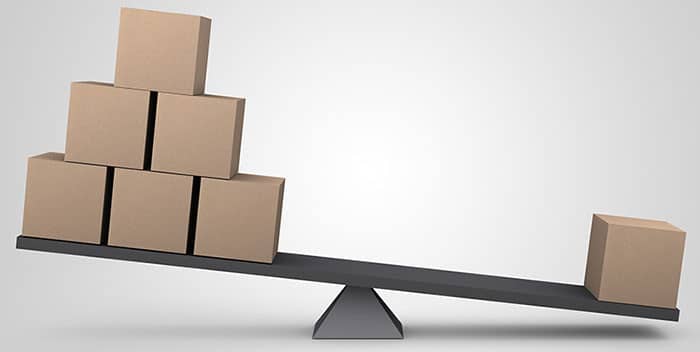Can purchase order management software improve efficiency for procurement teams?
The question of efficiency is one that every procurement team is seeking answers for.
In fact, improving operational efficiency is the number one Chief Procurement Officer (CPO) priority for 2021 according to Deloitte’s 2021 Global Chief Procurement Officer Survey.
The more suppliers you have to handle, the greater the need for a well-organized procurement process.
Part of this procurement process such as the creation of purchase orders – a task requiring you to fill out quantities, unit prices, product descriptions for every single raw material required – is tedious if done manually.
Thankfully, this is where automation via integration of purchase order management software can speed things up considerably and improve overall efficiency.
What is Purchase Order Management Software?
In order to understand what purchase order management software is, it’s key to know what a purchase order is.
In the simplest definition, a purchase order is a legally binding document that a buyer creates prior to purchase, listing the goods needed and their quantities.
The buyer sends this purchase order to the supplier and once the supplier views the required goods and formally accepts the responsibility to fulfill the order, a legal agreement is entered into.
To put it more clearly, purchase order management is the internal procurement procedure that oversees all activities surrounding the purchase process. The goal of purchase order management is simple: make sure each purchase is cost-efficient, necessary, and justifiable.
It’s not very easy to accomplish this if procurement teams have limited visibility because they are relying on manual legacy purchase order processes. This is why purchase order management software is so critical for purchase managers.
Purchase order management software is an integral technology that complements e-procurement solutions allowing the entire purchase order management process to move online.
How Purchase Order Management Software Promotes Efficiency
The best way to systematically study how purchase order management software boosts efficiency is to make a careful study of the steps making up the purchase order process.
1. Creation of Purchase Order
The first step of the purchase order process involves the creation of the actual purchase order. This is done using the approved purchase requisitions.
If no prior purchase requisitions are available, purchase orders will need to be created from scratch. Following the creation of the purchase orders, they must be submitted for approval.
A purchase order management software ensures that all of this is done in a timely manner giving visibility to necessary stakeholders.
2. Sign-Off & Authorizations
No purchase order can be submitted to a vendor without having been signed off and authorized at various levels by stakeholders on the buyer side.
And just who are these stakeholders?
· The requisitioner – the person or department that’s sent in a request to have something purchase
· The sign-off authority – the body responsible for giving permission or rejecting the requisition order
· Finance team – the department that after consulting budgetary allocations will give the purchase go-ahead and eventually release the funds once the invoice is received from the vendor
With so many people involved, having a dedicated purchase order management software where everything is centralized makes life incredibly more efficient for the procurement team.
3. Dispatch of Purchase Orders
What follows after the purchase orders have received the necessary approvals? The procurement team begins the next phase which is forwarding POs to the relevant vendors.
In the past, this would mean either emailing, fax, or posting purchase orders to suppliers. Today, thankfully, because of e-procurement solutions, purchase orders can be commissioned within a shared procurement platform.
This allows for faster communication, clearance, and fulfillment of purchase orders in real-time.
4. Delivery of Goods
Once the vendor has received, acknowledged the purchase order, and confirmed that they are able to fulfill it, a legally binding agreement is entered upon.
This means the supplier has taken on the responsibility of supplying the goods according to the terms and conditions on the purchase order.
In the event that there is any information on the purchase order that needs to be tailored such as delivery date, supplier details, pricing, or any other order details these can be easily corrected through the purchase order management software making life increasingly more convenient for all involved.
5. 3-Way Matching & Closure of PO
As soon as the supplier has delivered the goods, the procurement team on the buyer’s end starts three-way matching, contrasting with the purchase order (PO), the goods received notice (GRN), and the invoice.
With matching reconciled and any discrepancies discussed with the vendor, an approved invoice is sent to the finance team. The finance team proceeds to process the payment and then the purchase orders are deemed satisfactorily fulfilled and subsequently closed.
Since the introduction of e-procurement solutions and purchase order management software, the entire purchase order process has improved considerably and become more structured and efficient.
Conclusion
Thanks to purchasing order management software, the procure-to-pay process has indeed become more streamlined and straightforward.
In volatile moments such as the one created by the ongoing COVID-19 pandemic, any resources that allow procurement teams to efficiently mitigate supply chain disruptions are welcome.
If you’re looking for leading procurement software, you don’t have to go far.
ProcurePort is a trusted procurement solutions provider whose clients include UNOPS, HUD.GOV, and conEdison.
To discuss procurement software with a consultant or to schedule a demo of our solutions, contact us today.










